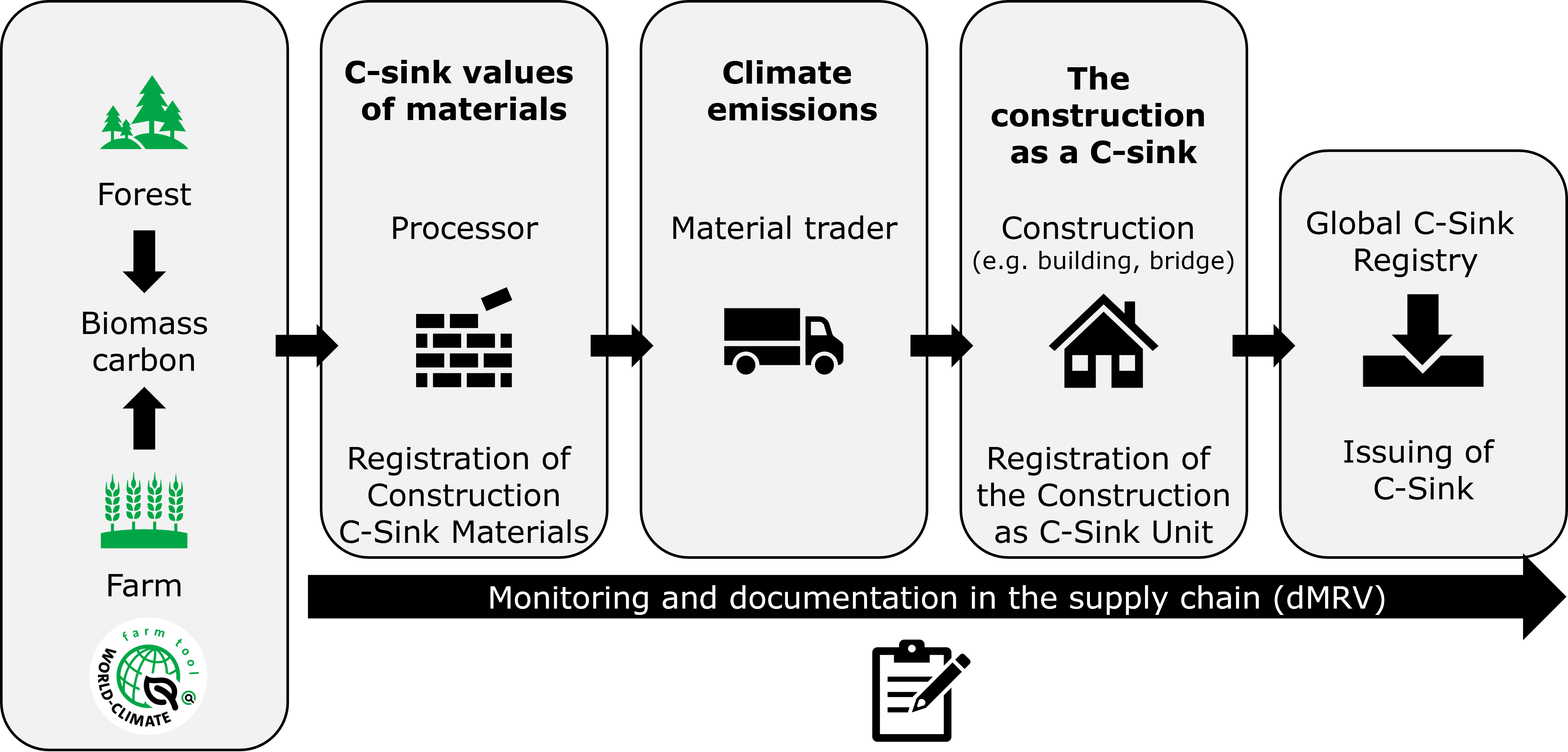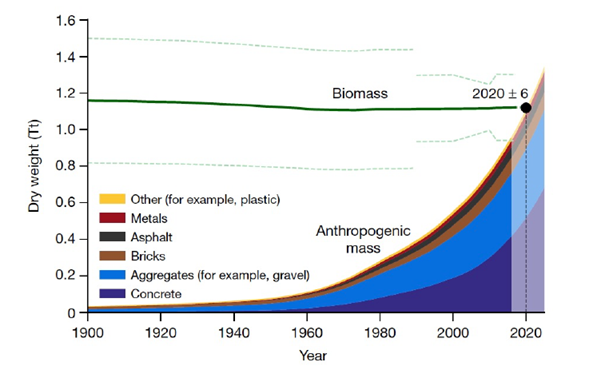
Global Construction C-Sink
The public consultation for our new Global Construction C-Sink Standard has been completed. We have received a lot of valuable feedback, which we are currently incorporating into the standard for version 1.0. We will inform you when the standard is ready for practical application.
Global Construction C-Sink Standard
The Global Construction C-Sink Standard certifies buildings and civil engineering works that contain biomass-derived Carbon Sink (C-Sink) Materials. The biomass contains organic carbon, which is based on the fact that CO2 was previously actively removed from the atmosphere. This biomass, examples of which include hemp or biochar, is incorporated into the building materials and thus represents a carbon sink. Each certified construction is considered a C-Sink Unit and can be registered in our publicly available Global C-Sink Registry if all GHG emissions that were caused by the production and transportation of the embedded Construction C-Sink Materials were offset.
The Global Construction C-Sink Standard includes guidelines for rigorous tracking of biomass-derived carbon from biomass production to the construction site, accounting for greenhouse gas (GHG) emissions for all processing steps in the production of Construction C-Sink Materials (i.e., GHG expenditures), and registering the construction lifecycle. The present standard ensures that every unit of carbon sequestered within the construction materials is trackable through endorsed digital monitoring, reporting, and verification (dMRV) systems.

The first building by Openly system to be certified.
While fossil CO2 emissions are significantly warming the Earth's atmosphere, reliable carbon sinks (C-sinks) are cooling the planet, leading to a global cooling effect. The Global Construction C-Sink Standard ensures that its global cooling effect is correctly calculated and publicly registered. The mandatory tracking system guarantees the integrity and transparent quantification of the C-sinks and their time-dependent climate effects.

Global Construction C-Sink, digital monitoring and documentation.
Recycling construction materials is both an integral part of circular economies and crucial in determining the long-term fate of the carbon embodied in the C-Sink Materials. Thus, the possible recycling scenarios of construction materials are considered in the certification and registration procedures, ensuring that its global cooling potential is correctly calculated and publicly registered.
The certification of a carbon sink includes all elements that have arisen during its construction. It thus not only includes the calculation of the global cooling effect of the carbon sink, but also the assessment and compensation of all emissions that have arisen during the construction of the carbon sink. The lifecycle of the construction must be estimated and compared to the average lifecycle of the same type of construction. Based on this assessment, the technical audit defines the monitoring method and controlling period of the Construction C-Sink.
A building usually represents a secure carbon sink for at least 60 years.
If 20% of anthropogenic building material could be replaced by biomass-derived materials and recycled carbon, around (1100 Gt * 20% * 50% * 44/12=) 400 Gt CO2e could be transferred worldwide into C-sinks over the next 20 years, representing around half of the negative emissions required to maintain global warming below 1.5 °C (UNFCCC, 2015) given that GHG emissions were curbed to 10% by 2050 (Smith et al., 2024). Even if only a feasible 10% of construction materials were replaced by Construction C-Sink Materials, a significant annual C-sink increase of 200 Gt CO2e could still be achieved. For this reason, a certification standard for construction-related C-sinks is urgently required and is, therefore, provided for the first time in the new Global Construction C-Sink Standard presented here in such a way that it can be implemented in practice.

Biomass and anthropogenic mass estimates since the beginning of the twentieth century on a dry-mass basis following Elhacham et al., 2020.
A Construction C-Sink is a building or work of infrastructure that contains a certified amount of biomass-derived carbon that is protected from oxidation to CO2 for verifiable periods of time due to its embedding in the construction. Every certified Construction
C-Sink is considered a C-Sink Unit and can be registered.
Construction C-Sink Materials can be used in a construction project and contain significant quantities of carbon from non-fossil sources. The stored carbon remains in the material during its useful life. The approved materials are registered and certified in the Construction C-Sink Material Index.

Contact person
 Ueli Steiner
Ueli Steiner

